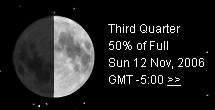Friday, April 4, 2008
Kenmore Dishwasher Reset
The first time this happened my wife called Frigidaire (or whoever really makes these things) and the service rep said that it does that when the water coming into it isn't hot enough, and to let the water at the tap run until it's hot before starting the dishwasher.
She also gave use the reset sequence to make the washer go through it's test cycle and clear this fault. Each time this happens, I rack my brain trying to remember the reset sequence. I search the web, and I have NEVER found it. I wonder if there is a powerful Appliance Repair Guild which wields great political power on the net.
Though perhaps nobody ever thought to post this sequence.... Nah!!! There has to be a conspiracy somewhere!
Ok so here it is....
Alternately Press "Normal Wash", "Heated Dry", "Normal Wash", "Heated Dry", "Normal Wash", "Heated Dry"
All the lights will go on and the washer will go through its test cycle. When it's done it will be all fixed.
[Sound of doorbell...] Yes? You're from the Appliance Repair Guild?... What??? that's a hypodermic needle?... Argggghhhhhh....
[Sound of falling body striking mouse and clicking "Publish Post"]
Sunday, November 12, 2006
The Google Moon
 Have you tried the Google moon gadget? At my work, I like to keep track of the phase of the moon. It can be a good indicator of how the boss is going to behave. So I was pleased to see Google lets me add a moon phase gadget to my home page.
Have you tried the Google moon gadget? At my work, I like to keep track of the phase of the moon. It can be a good indicator of how the boss is going to behave. So I was pleased to see Google lets me add a moon phase gadget to my home page.
But have you tried playing with it? Its default display, top image left, is the view from the Northern Hemisphere. If  you click the >> symbol, you get the opportunity to view the moon as it would look from the Southern Hemisphere (bottom image left).
you click the >> symbol, you get the opportunity to view the moon as it would look from the Southern Hemisphere (bottom image left).
But wait! That's not all, take a look at the left side of the image. On the Southern Hemisphere, it is the same as the right side, only upside down. This moon has TWO Seas of Tranquility. The Northern Hemisphere view has the expected Sea of Copernicus (the face of the man in the moon with his bright 'eye').
I'm not writing to pick on the poor programmer who tried to get this right, ... well, not to much anyway, but merely to point out that the solution to displaying the moon as viewed from the Southern Hemisphere is absolutely simple: When we cross the equator heading south, we no longer see the moon in the southern sky, but in the northern sky. It's the same moon, just viewed from 'down under' .
All Google Moon needs to do is rotate the Northern Hemisphere image 180 degrees. Or vise versa if one is Southern Hemisphere-centric.